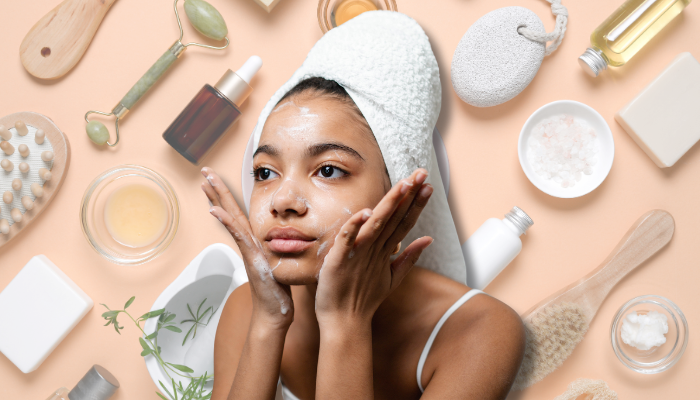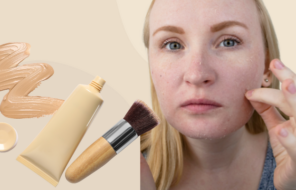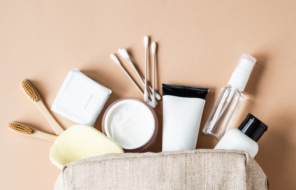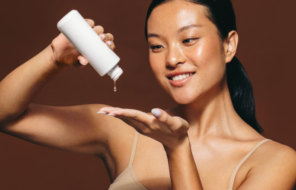Skincare mishaps happen to the best of us. One moment you’re feeling like a self-care queen, slathering on your new exfoliating toner, and the next, your face is burning like you just stuck it in a volcano. Yikes. If you think you’ve had a run-in with a chemical burn, don’t panic—we’ve got you covered with all the info you need to soothe, heal, and prevent it from happening again
What Exactly Is a Chemical Burn (and How Did This Happen)?
A chemical burn sounds scary, but in the skincare world, it’s basically when an ingredient is too harsh for your skin, causing redness, stinging, peeling, and sometimes even blisters. Not fun.
Some of the biggest culprits? Powerful actives like retinol, AHAs (glycolic acid, lactic acid), BHAs (salicylic acid), and even high concentrations of vitamin C. Using them incorrectly—too often, too much, or layering them with other strong actives—can spell disaster for your skin barrier. Fragrances, preservatives, and even natural ingredients can also cause burns if your skin isn’t a fan.
Immediate SOS: What to Do Right Now
Stop, Drop, and Rinse! First things first: wash your face with cool water for at least 10–15 minutes to neutralize whatever is causing the irritation. No scrubbing—just a gentle rinse.
Ditch the Offender. Whatever product did this to you? It’s on a timeout. Do not, under any circumstances, apply it again until your skin has healed (and maybe do a patch test next time!).
Cool It Down. A cold compress can help calm the heat and inflammation. Just soak a clean washcloth in cool water, wring it out, and gently press it onto your skin for relief.
Hands Off! Don’t pick, rub, or touch the area. Your skin barrier is in distress, and extra irritation will only make things worse.
Keep It Simple. Now is NOT the time for your 10-step skincare routine. Strip it back to the basics: a gentle, hydrating cleanser and a soothing moisturizer. That’s it.
How to Soothe & Heal Your Skin With a Chemical Burn
Once you’ve done damage control, it’s time to focus on repair mode. Here are some of the best ways to nurse your skin back to health:
Aloe Vera Gel – Nature’s miracle worker! It’s anti-inflammatory, cooling, and super soothing. If using fresh aloe, only use the clear gel (not the yellowish latex—it can irritate your skin!).
Avène Cicalfate+ Restorative Protective Cream – A cult-favorite for healing damaged skin, this cream is packed with ingredients that help speed up recovery and keep your skin comfy.
La Roche-Posay Cicaplast Baume B5 – This little powerhouse contains panthenol and shea butter to deeply hydrate and repair compromised skin.
Fragrance-Free Moisturizers – Stick to simple, non-irritating formulas. Anything with fragrance or alcohol? Hard pass.
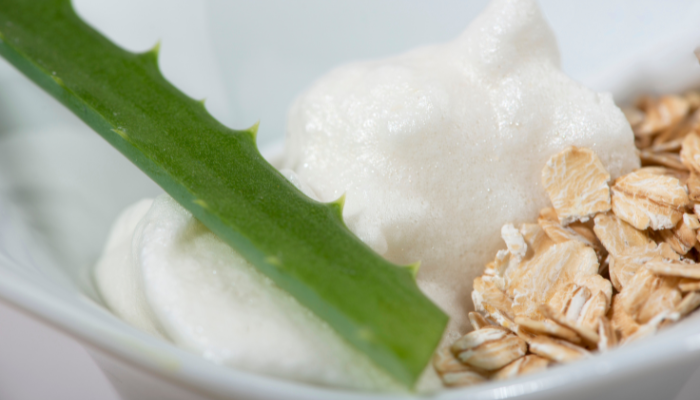
Kitchen Remedies That Can Work Wonders
Your kitchen might just hold the key to calming your skin! Try these:
Oatmeal Mask – Soak plain, unsweetened oatmeal in cool water, then apply it as a mask for 10–15 minutes. It’s packed with anti-inflammatory goodness.
Raw Honey Spot Treatment – Honey is antibacterial and hydrating. Apply a thin layer to irritated spots, leave for 10 minutes, then rinse with cool water.
Green Tea Compress – Brew a bag of green tea, let it cool, and use it as a soothing compress to calm redness and inflammation.
(Just remember—if your skin is extra-sensitive, always patch-test first!)
When to Call in the Pros
Most mild burns will heal with proper care, but if you experience blistering, excessive swelling, open wounds, or worsening pain, see a dermatologist ASAP. Also, if you develop fever-like symptoms or signs of infection, don’t wait—get professional help.
How to Avoid a Chemical Burn in the Future
Let’s be real—prevention is key. Here’s how to make sure this never happens again:
✔ Patch Test First! Apply new products to a small area (like behind your ear) before going all-in on your face. ✔ Ease Into Actives. If you’re using retinol, AHAs, or other exfoliants, start slow (think 1–2 times a week) and gradually increase frequency. ✔ Don’t Overdo It. Layering multiple strong actives can be a recipe for disaster. Avoid mixing exfoliants with retinol, strong vitamin C, or benzoyl peroxide unless you know your skin can handle it. ✔ Follow Instructions. Some products are meant for short contact (like peels) and shouldn’t be left on too long. Read the label before slathering! ✔ Check Expiry Dates. Expired products can be unstable and more likely to irritate your skin.
Sun Protection: Your Skin’s New BFF
Burned or not, SPF should be a non-negotiable part of your routine. If you’ve had a chemical burn, your skin is extra sensitive to UV damage, which can lead to worse irritation, prolonged redness, and even hyperpigmentation.
Best Picks: EltaMD UV Clear Broad-Spectrum SPF 46 (lightweight, calming) or La Roche-Posay Anthelios Mineral Sunscreen SPF 50 (gentle but protective).
Bonus Protection: Hats, sunglasses, and avoiding peak sun hours will help prevent further damage while your skin heals.
FAQ: Because We Know You’re Wondering…
What does a chemical burn look like?
It can show up as redness, peeling, stinging, or even blistering. If it looks and feels angry, treat it ASAP.
How long does it take to heal?
Mild burns usually heal in a few days to a week with proper care. Severe ones? Might take longer.
Can I wear makeup after a chemical burn?
Not a great idea. Give your skin time to heal before applying anything that might clog pores or cause irritation.
What ingredients should I avoid after a chemical burn?
Skip retinol, AHAs, BHAs, vitamin C, alcohol-based products, and strong exfoliants until your skin fully recovers.
Can I use over-the-counter hydrocortisone cream?
Maybe—but don’t go overboard. It can reduce inflammation, but using it too much might thin your skin. Check with a dermatologist first!
Final Thoughts
A chemical burn can be a serious bummer, but your skin is resilient! With a little patience and the right TLC, you’ll be back to glowing in no time. And next time? You’ll be the patch-testing, label-reading, skincare-savvy queen who avoids the burn altogether.

